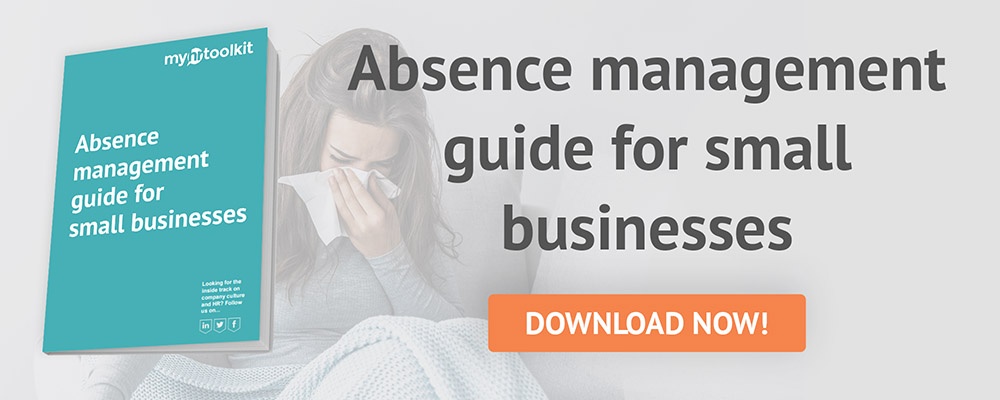This guide on how to handle an employee abusing sick leave has been checked and approved by Matthew Ainscough, Head of Employment at Taylor and Emmet LLP. The guide was last updated on 1st March 2022.
It's an unfortunate fact that everybody gets ill sometimes; in the workplace, this translates into sick days – unplanned absences that can be tricky to manage. However, if you are beginning to suspect that an employee is abusing sick leave when they're not actually ill, this article has some tips on how to address the situation and ultimately reduce the misuse and abuse of sick leave at work.
What is considered sick leave abuse?
If an employee has frequent absences and/or doesn't provide adequate reasons for why they are absent, they may be misusing or abusing sick leave. The misuse of sick leave has another name: absenteeism. This refers to employees who consistently take time off work sick when they don’t need to do so.
How to reduce sick leave abuse

There are ways to reduce instances of sick leave abuse, both before and when absences occur.
Set your boundaries for sick leave abuse
Firstly, it's good to set your parameters as to what constitutes probable sick leave abuse for your organisation. Consult with an employment law expert to decide what levels of absence may be unacceptable (depending on the circumstances). You'll need to make sure you aren't discriminating against staff whose absences are related to disability.
Learn more: Reasonable adjustments at work: making your workplace more accessible
Deter employees abusing sick leave at policy level
Within your staff handbook, ensure you have a robust sickness absence policy. Detail how you handle sick leave and what you require from employees who take time off work for sickness. You should also periodically remind employees of your policy in email or conversation. This will show you're on top of monitoring sickness absence, deterring instances of abuse. You should also warn employees that a failure to follow the sickness absence procedure could result in disciplinary action being taken against them.
Record and measure absences to identify sick leave misuse
Recording absence is essential for compliance and also helps you identify where misuse of sick leave may be at play. If this is something you're interested in exploring further, check out our absence management feature:
Track and measure absences across your organisation with absence management software
HR software is also ideal for ensuring managers follow up on your sickness absence procedures. For instance, with myhrtoolkit you can set up sickness trigger points that alert managers to employees whose absences pass particular thresholds. This could be that their Bradford Factor score has risen above a certain point or they've had a certain number of absence instances within a given time period.
How to approach an employee abusing sick leave
If you suspect an employee who is frequently absent is abusing sick leave, it's important to approach the situation practically but carefully. You also need to have your facts ready, which is why recording and measuring absence using software is so helpful.
Managers should be proactive when someone in their team is off sick in order to tackle situations of abuse. Maintain regular contact while the employee is off sick and a return to work interview when they are back. This shows you are attentive when it comes to sickness absence. For genuinely ill employees, this is reassuring, while anyone playing absentee is reminded that they can't slip under the radar.
For more tips on how to talk to an employee who is frequently absent, see our article on how to discuss absenteeism with an employee.
Handling employees abusing sick leave: summary checklist
As a summary checklist, here is what you can do to reduce sick leave misuse and abuse in your organisation:
- Remind employees of your sickness absence policy, particularly in regards to unexplained or unauthorised absences.
- Ask employees to check in regularly when they're off sick e.g. a daily text or phone call to their line manager.
- For absences that last longer than a week, request that the employee provides a Statement of Fitness for Work (fit note) from a doctor.
- Perform a return to work interview; for each instance of sickness if possible, or for absences lasting for more than a given number of days.
- Monitor staff absences with absence management software to pick up on patterns that may indicate misuse of sick leave.
Read more from the myhrtoolkit blog
Are your employees overworking? Here's why that's worrying...

Written by Camille Brouard
Camille is a Senior Marketing Executive for myhrtoolkit who writes on topics including HR technology, workplace culture, leave management, diversity, and mental health at work.


 Holiday Planner
Holiday Planner Absence Management
Absence Management Performance Management
Performance Management Staff Management
Staff Management Document Management
Document Management Reporting
Reporting Health and Safety Management
Health and Safety Management Task Management
Task Management Security Centre
Security Centre Self Service
Self Service Mobile
Mobile




